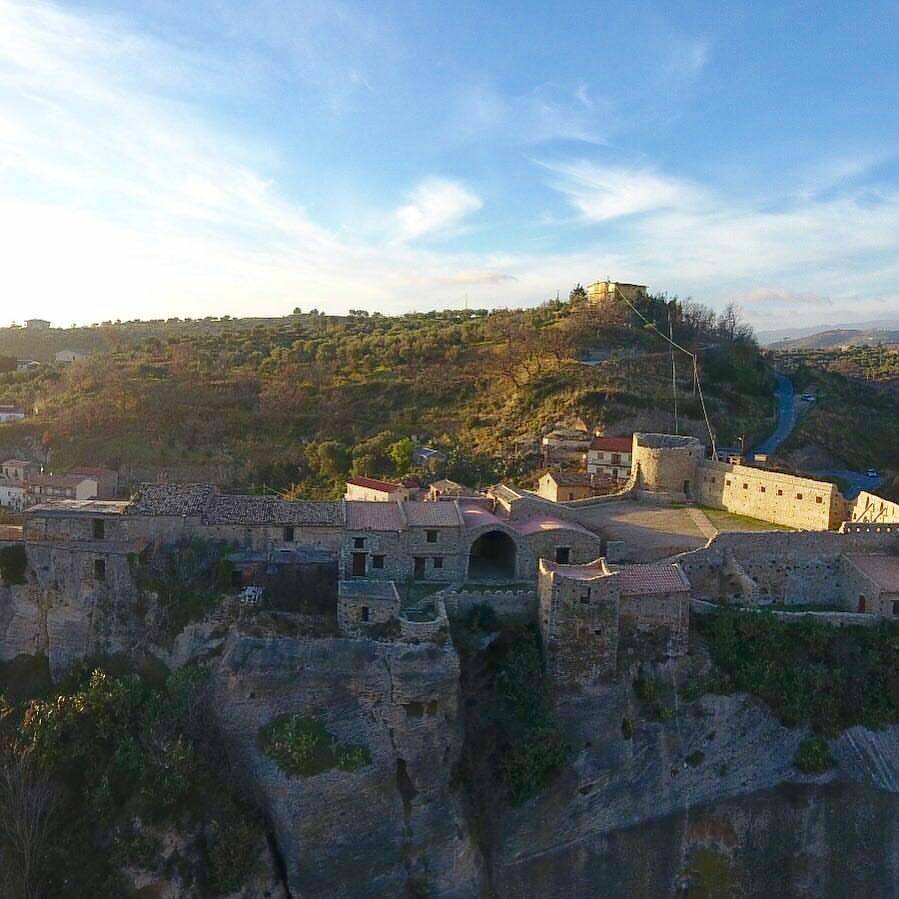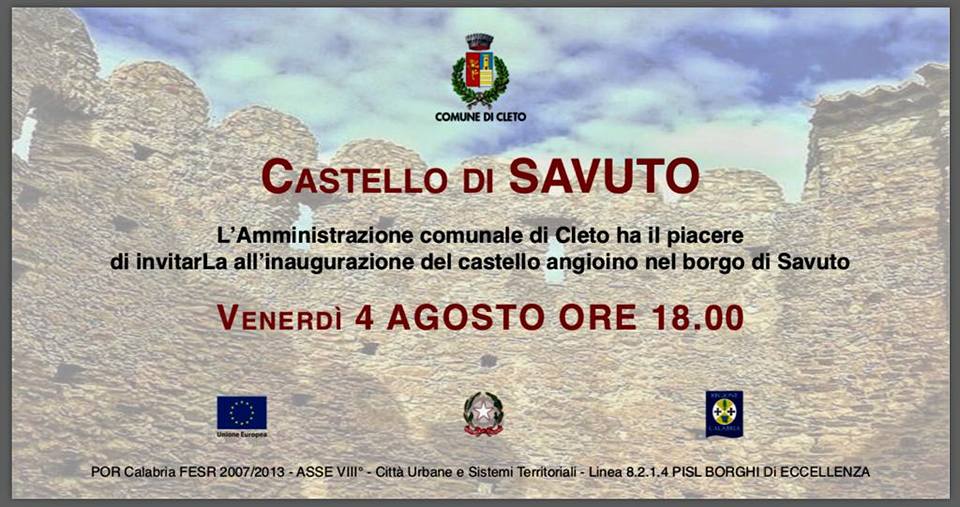Article by Armando Orlando

The inhabited center of Savuto stands on the right side of the river from which it takes its name.
A river – the Savuto – which originates in the Sila, crosses pine, beech, Turkey oak and chestnut forests, becomes torrential, continues its march down to the valley, plunges into the Mediterranean maquis and pasture lands, and after a 55 kilometers disappears into the Tyrrhenian Sea.
A river that many historians identify with the Okinaros, the Ocinaro which in Licofrone bathes the sepulcher of the siren Ligea; which over the centuries has fed thousands and thousands of families thanks to the fertility of its “spots” and which today is abandoned and devastated by the hand of man: the latest works to widen the motorway gave the coup de grace to Corso of water, aggravating the pollution and making many areas unusable.
The inhabited area is spread over a hill at 328 meters above sea level. and is dominated by the walls of a recently restored castle. The first historical reference known so far dates back to 1267, the year in which the Pope lists the donations in favor of the Abbey of Fiumefreddo Bruzio known as Santa Maria di Fonte Laurato, and among the possessions we find the mention «Petraemalae et Sambuti» .
In the Registers that measure the Calabrian population of 1276, Petramala (today’s Cleto) is present with 214 inhabitants and Savuto with 45 inhabitants. But it is right there, in Savuto, that the king of Naples has a castle built, at a time when the Aragonese troops of Sicily are planning the invasion of Calabria. The building stands on the northern bank of the river, and stands guard over the communication routes that rise inland from the sea; routes already traveled by the Saracens who had gone to attack Martirano.
The houses grow around the castle, and in 1571 Gabriele Barrio wrote: «So there is the castle of Petramala, once called Cleta, founded by Cleta, nurse of Queen Penthesilea, equipped on all sides with strong towers, destroyed by the Crotoniati, as Lycophron writes in the Cassandra […] Not far from Petramala rises the town of Sabazio, and a river of the same name flows into the sea, navigable and full of fish, once called Ocynarus…».
When the land of Savuto was detached from the feud of Pietramala and entrusted to the Arnones, the noblewoman Eliodora Sambiase, wife of Ascanio Arnone, Royal Treasurer of Calabria Citra from 1555 to 1559, had an inscription in Latin engraved on a marble slab which placed on the castle walls and which the scholar Rocco Liberti translates as follows: «Eliodora Sambiase, already a young bride united with her husband Arnone, offers temples to God, clear waters and verdant gardens to the nymphs and the castle of Savuto as a hotel to anyone in need» .
At the end of the sixteenth century, the barony of Savuto became a fief of the Aquino family, who controlled many lands in Calabria, including Martirano and Castiglione Marittimo, and a new village was built on the cultivated lands on the left side of the river, to which the name of San Mango is given.
Today the town of Savuto is aggregated as a fraction of the municipality of Cleto.
